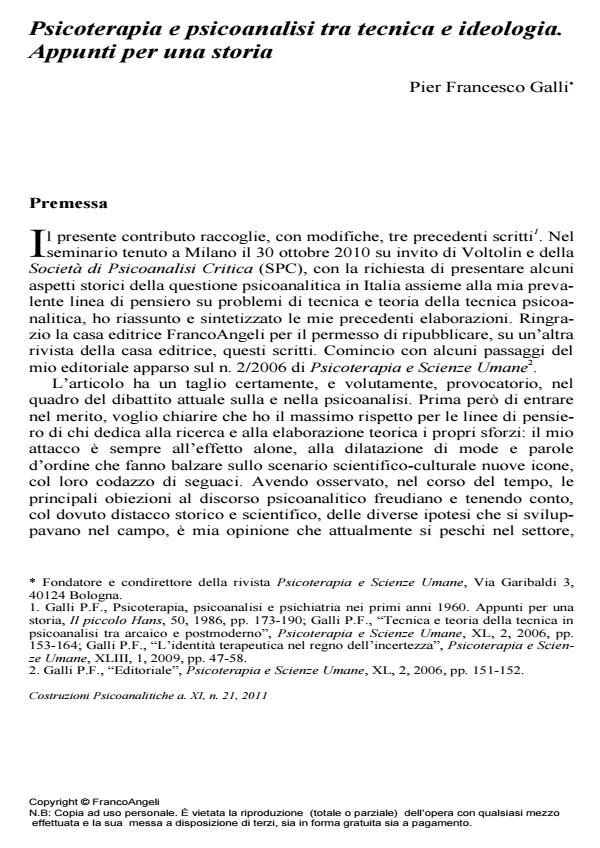Psicoterapia e psicoanalisi tra tecnica e ideologia. Appunti per una storia
Journal title COSTRUZIONI PSICOANALITICHE
Author/s Pier Francesco Galli
Publishing Year 2011 Issue 2011/21 Language Italian
Pages 36 P. 107-142 File size 608 KB
DOI 10.3280/COST2011-021007
DOI is like a bar code for intellectual property: to have more infomation
click here
Below, you can see the article first page
If you want to buy this article in PDF format, you can do it, following the instructions to buy download credits

FrancoAngeli is member of Publishers International Linking Association, Inc (PILA), a not-for-profit association which run the CrossRef service enabling links to and from online scholarly content.
Pier Francesco Galli, M.D., describes some developments of psychotherapy, psychoanalysis, and psychiatry in Italy in the 1960s, particularly concerning the cultural project of the "Milan Group for the Advancement of Psychotherapy" (since 1978 named Psicoterapia e Scienze Umane, from the title of the journal he had founded in 1967). The following topics, among others, are discussed: the introduction of new technologies and disciplines (such as psychology and sociology) in Italy after World War Two, role of the intellectuals, training of mental health professionals and the diffusion of psychoanalysis, team-work, role of publishing houses, the continuing education courses organized since 1962 by this Group, the culture of descriptive psychiatry imported in the 1980s from the US with DSM-III, the transmission of psychoanalytic culture often as truths of faith in which the concept of "standard technique" has been confused with the method and the very essence of psychoanalysis, the foundation criteria of psychoanalytic method, the problem of therapeutic identity, and so on.
Keywords: Story of psychotherapy and psychoanalysis in Italy, psychoanalytic training, psychotherapist‟s identity, intersubjectivism, psychoanalytic technique
Pier Francesco Galli, Psicoterapia e psicoanalisi tra tecnica e ideologia. Appunti per una storia in "COSTRUZIONI PSICOANALITICHE" 21/2011, pp 107-142, DOI: 10.3280/COST2011-021007